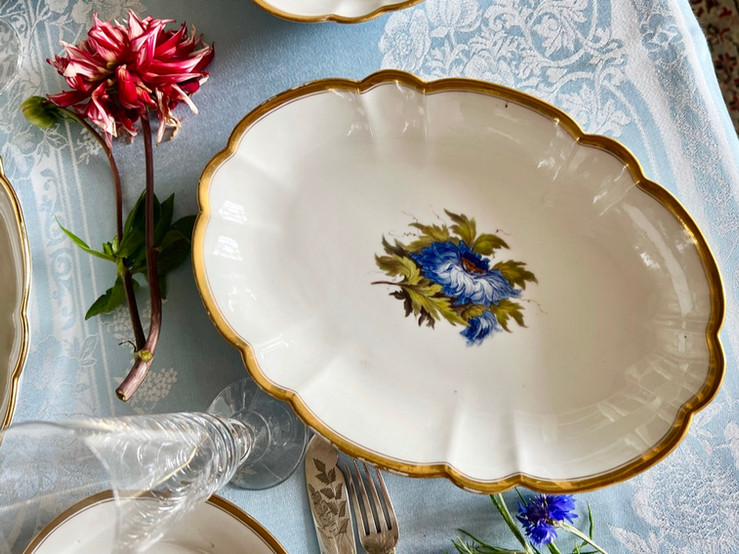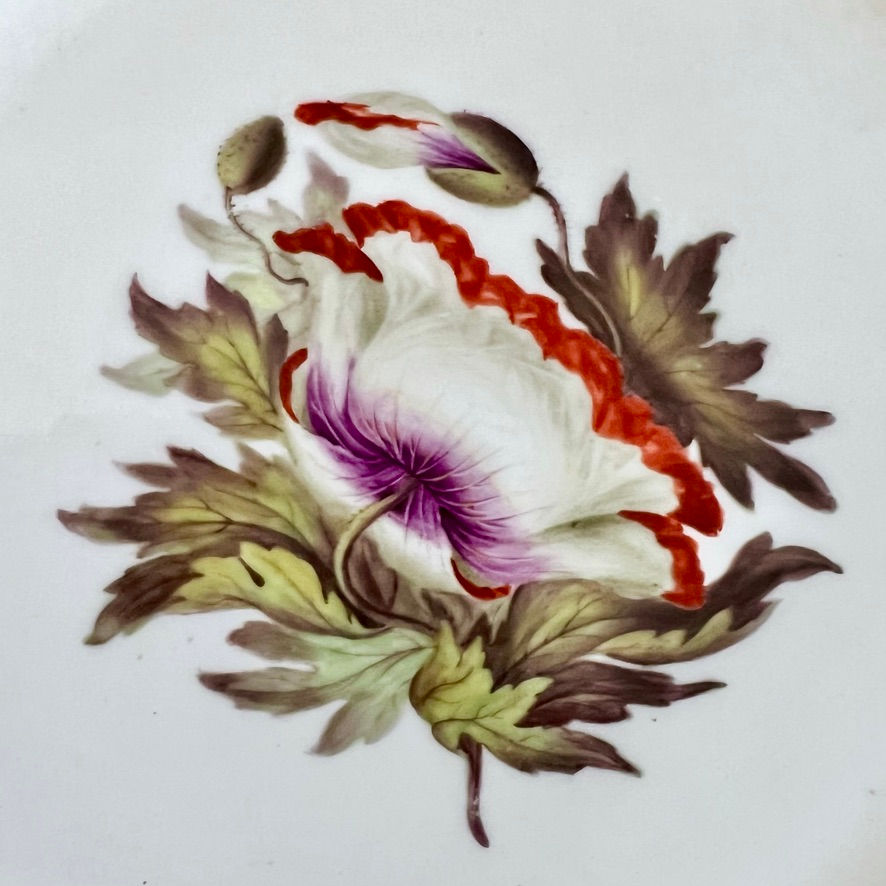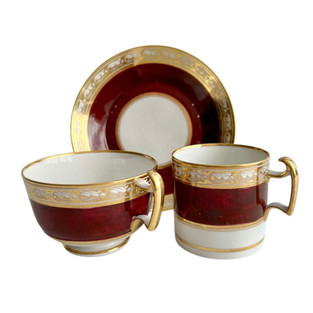Search
Billingsley's flowers
- willa
- Apr 20, 2024
- 3 min read
Happy weekend! Today I am showing a very special part-dessert service. It is exceptionally elegant and beautiful, but it is also very rare and I felt so lucky to be able to add it to my collection of available items.
This part-dessert service was made by Barr Flight & Barr in Worcester. It was painted with simple, naturalistic flowers by William Billingsley, who worked there for just two years, between 1808 and 1810. The design is striking in its restrained elegance, with a simple white ground and modest gilt borders. Each item shows one free-flowing naturalistic flower. Each flower has a striking personality, as if it is a portrait of an individual, rather than just a flower. Some of them are a little blemished and discoloured, others seem to have been blown around by the wind before ending up on their plate.
There is a lot more to say about William Billingsly... Born in 1758, he was a brilliant but notoriously difficult man who left behind a trail of debts, broken hearts and mystery - but he was also the most important innovator in the history British porcelain.
While still an apprentice at the Derby factory, Billinglsey's mentor was the "King of Landscapes" Zachariah Boreman, whom I have a coffee cup of, see also below. He first spotted his talent and encouraged him to develop a free, flowing style of flower painting. Billingsley liked to present flowers playfully from all perspectives, with shiny highlights, and he developed a new technique of painting these. He taught this technique, as well as the flowing style, to others, and it was to become the quintessentially British style of porcelain painting, contrasting with the more restrained Continental style.
But Billingsley had bigger dreams than flowers; his true passion was making porcelain. English porcelain was still quite crude in comparison to the fine porcelains of the European Continent, and Billingsley became obsessed with finding the British equivalent. He started the Pinxton factory in Derbyshire, which produced some beautiful porcelain, but ran out of money quickly. After running a decoration studio in Mansfield he mysteriously disappeared for a number of years. He showed up penniless in Worcester in 1808, named Beeley; he had walked hundreds of miles to escape creditors.
The Barr Flight & Barr factory hired him to improve their porcelain body, but Billingsley’s recipe caused so much kiln wastage that the business-savvy factory never adopted it. They paid Billingsley £200 for keeping it secret and wanted him to paint flowers. Instead, he ran off to Nantgarw in Wales (pronounced nant-GAR-oo), where he used his £200 to set up another factory.
The Nantgarw factory was a short-lived but defining experiment and it produced the finest British porcelain ever made. However, it still generated 90 per cent kiln wastage, which means that of every 10 items fired, only one survived. You can imagine that money ran out quickly and Billingsley absconded yet again, this time walking a further 100 miles to Coalport, where he remained and painted more flowers until his death in 1828.
This beautiful service is a unique opportunity to own a little piece of history and grace your home with these beautiful flowers. This service also has provenance; it formed part of the collection of Charles Dawson and he showed three of these dishes in his book "Worcester Flight & Barr Porcelain" (p.199, fig.18.16). A pair of dishes from the same service is exhibited in the Museum of Royal Worcester.
Where to find things
You can find this dessert service and many other dinner and dessert services here, and all my available stock here. If you always want to see the latest additions, follow me on Instagram... I post pictures and a story several times a week.
Happy weekend, and marvel at the flowers!
This week's new treasures:







































































Comentarios